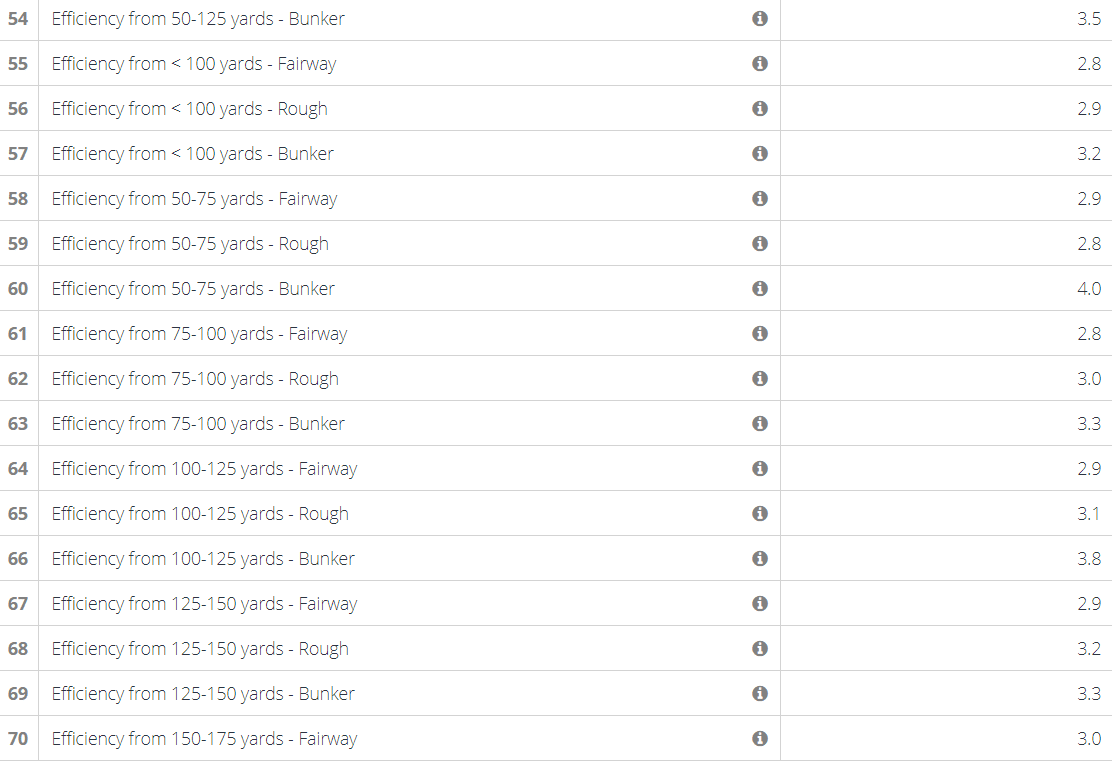The difference between ‘difficult shots’ and ‘easy shots’.
This is part 3 of our ‘What is Strokes Gained’ Series. To view the previous blog posts, click here for part 1 and here for part 2.

A more difficult shot.
Let’s take a look at a ‘difficult shot’. Most people would agree that it is more difficult to be in a bunker than being on the green. So what does that mean?
It means that with our new way of looking at golf shots, your ‘Expected Score’ from the bunker is higher than your ‘Expected Score’ from the green. A typical college player will have an ‘Expected Score’ of around 2.7 from the bunker, but from 30 feet on the green, their ‘Expected Score’ is around 2.1. This is what we are talking about here – a more difficult shot has a higher ‘Expected Score’ than an easier shot.
A difficult shot is more difficult than an easier shot because your ‘Expected Score’ is higher than it would be from the easier lie.

An easier shot.
This is an easier shot. The 1 foot putt. Almost everyone that plays golf regularly makes this putt. Even beginners faced with this putt can often make this putt regularly. In our new way of thinking, this means that the expected score is very low; for an average college player it is around 1.002. We know this instinctively, of course: a shot hit to 1 foot is a lot better than one hit into a bunker – but in the modern way of thinking about this, we assign these shots their proper ‘Expected Scores’.
A ‘difficult shot’ is a more difficult shot because its ‘Expected Score’ is higher and vice versa. We should always strive for finding places that have as low an expected score as possible.
A shot in the rough has a higher ‘Expected Score’ than a shot hit from the fairway from the same distance; a shot hit from 10 yards on the green has a lower ‘Expected Score’ than one hit from off the green. How do we know? Because with Anova we measure our performance on the course, and can calculate our own ‘Expected Scores’ from each distance and lie.
In Anova, we can look up our own expected scores:

Expected Scores from different distances and lies.
